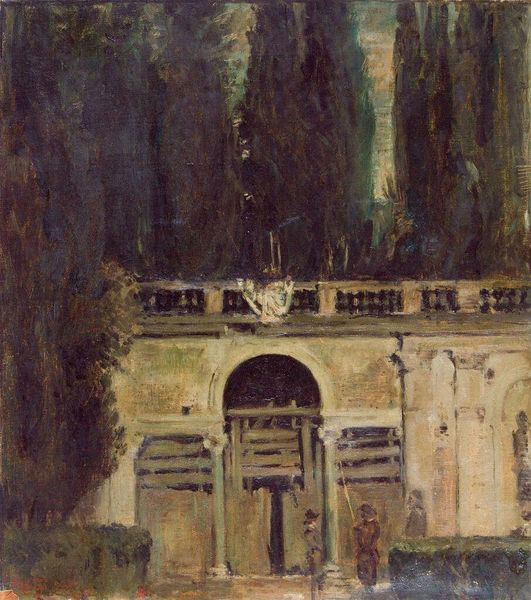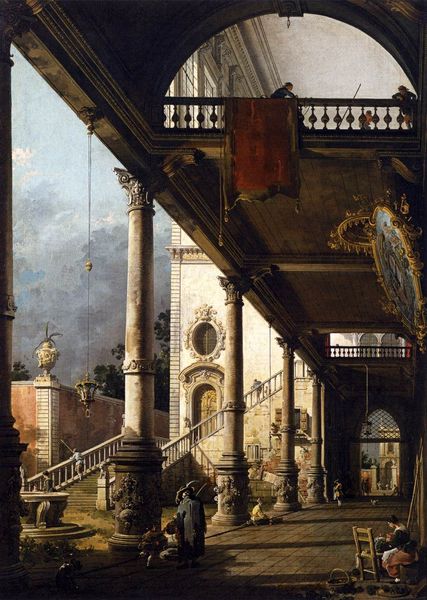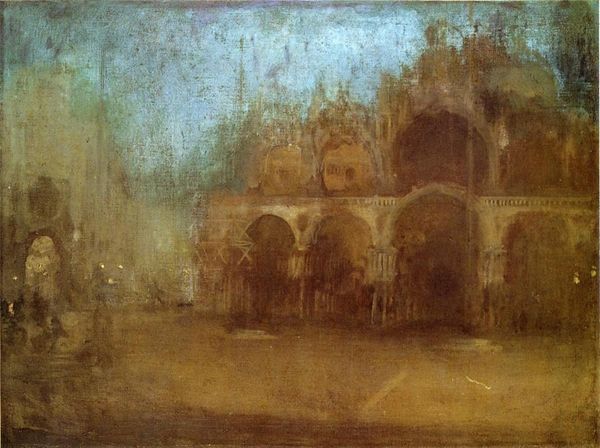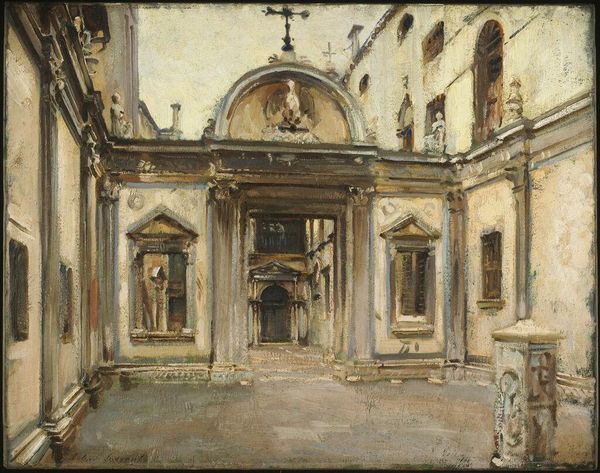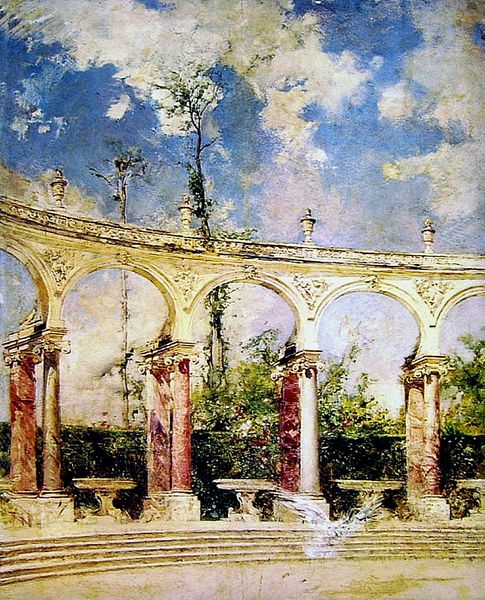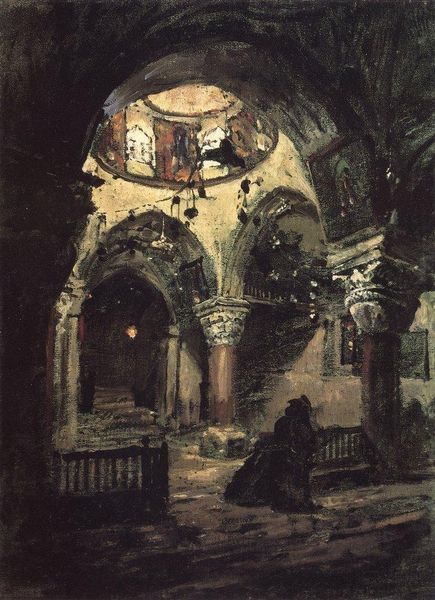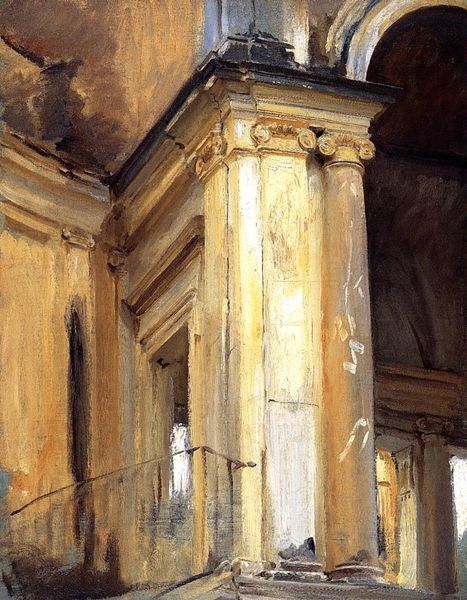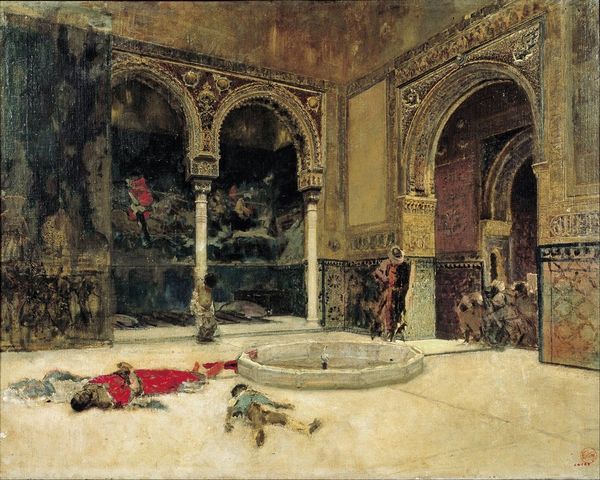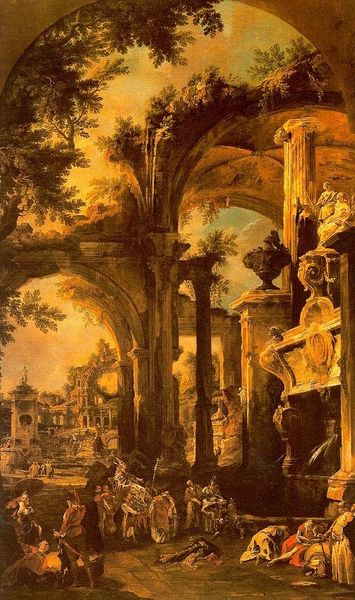
Villa Medici in Rome (Facade of the Grotto Logia) 1630
0:00
0:00
diegovelazquez
Museo del Prado, Madrid, Spain
painting, oil-paint, architecture
#
portrait
#
baroque
#
painting
#
oil-paint
#
sculpture
#
landscape
#
oil painting
#
history-painting
#
architecture
#
realism
Dimensions: 42 x 48 cm
Copyright: Public domain
Diego Velázquez painted this oil on canvas, Villa Medici in Rome, sometime in the 1630s. The facade of the Grotto Loggia dominates the composition, its pale stone standing in contrast to the dark, towering trees behind. The artist’s brushwork is loose, almost dissolving the forms into a play of light and shadow that softens the architectural precision. Velázquez’s approach here can be viewed through a structuralist lens, revealing a tension between the natural and the constructed. The ordered facade represents a system of human control, yet it is enveloped by the organic forms of the trees, which could symbolize an uncontrollable force. Semiotically, the grotto, traditionally a place of retreat and reflection, is presented here as an ambiguous space, boarded up and seemingly inaccessible. The painting challenges the established order and the way we perceive space and meaning. The artist invites us to question the nature of representation itself.
Comments
No comments
Be the first to comment and join the conversation on the ultimate creative platform.
